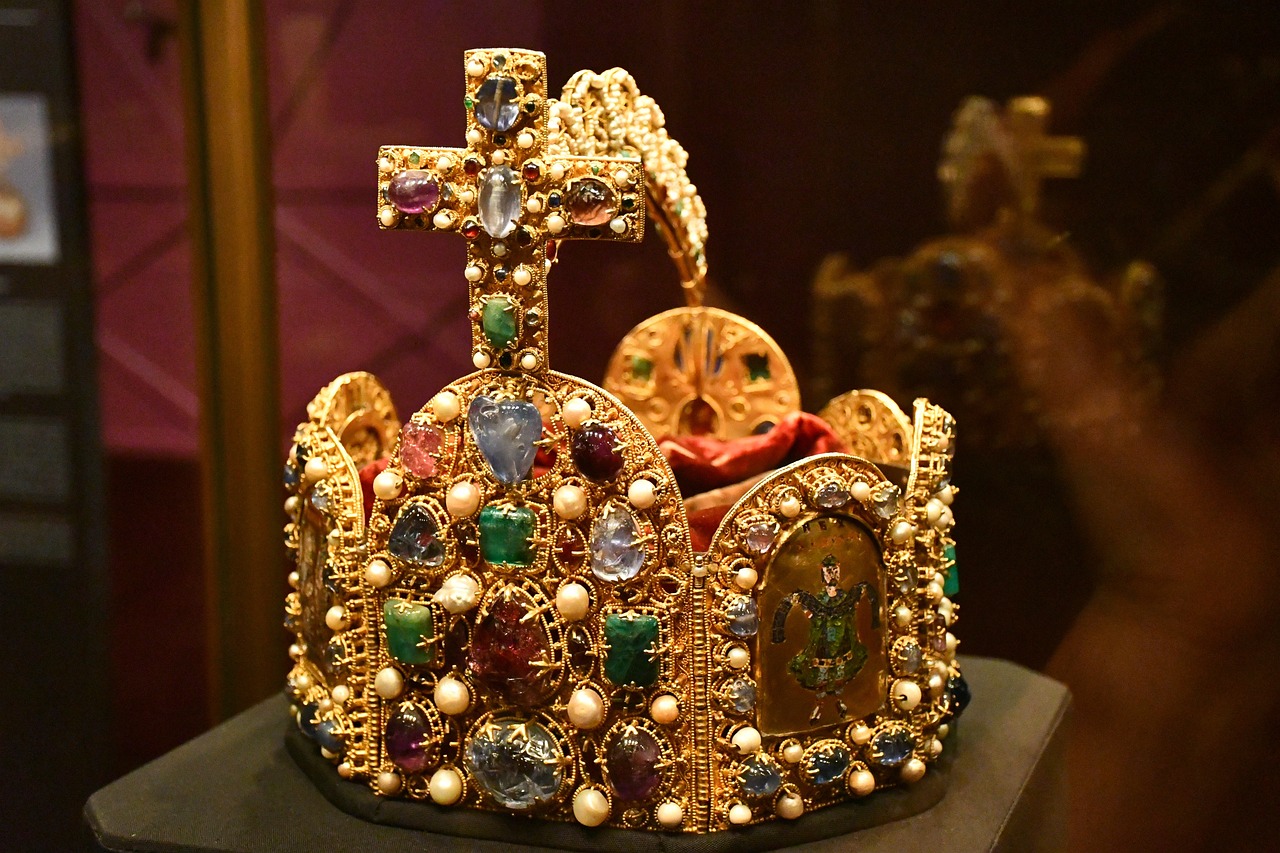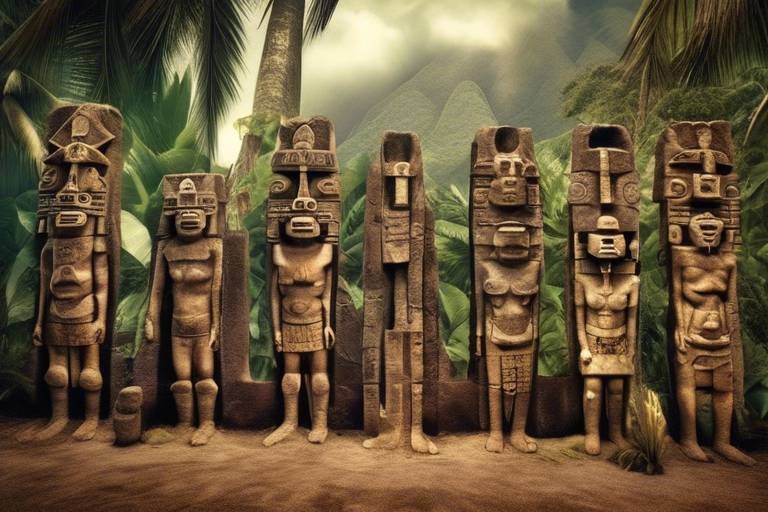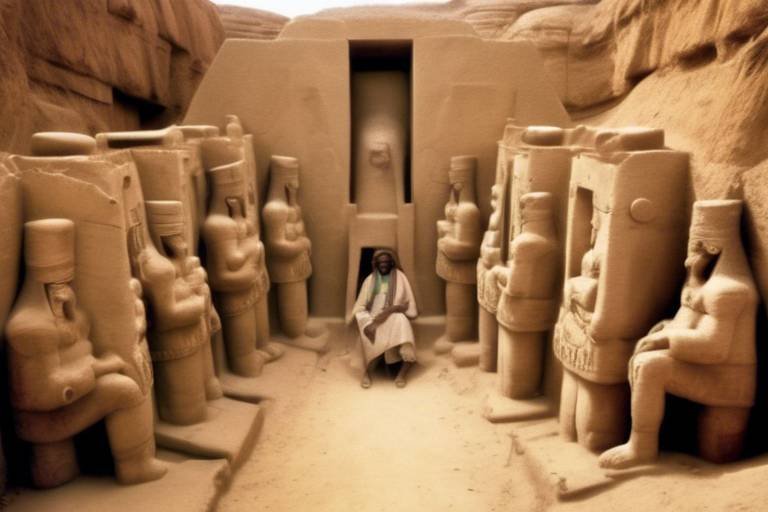The Rise and Fall of the Mughal Empire - A Comprehensive Review
The Mughal Empire, a once-mighty dynasty that ruled over the Indian subcontinent, has left an indelible mark on history with its rise and eventual fall. From the grandeur of its establishment to the tumultuous period of decline, the Mughal Empire's journey is a captivating tale of power, glory, and eventual disintegration.
Founded by Babur, a descendant of Genghis Khan and Timur, the Mughal Empire emerged as a formidable force in India during the 16th century. Under the visionary leadership of Akbar, Babur's grandson, the empire flourished, embracing diverse cultures and implementing progressive policies that fostered unity and prosperity.
During the Golden Age of the Mughal Empire, under the rule of Shah Jahan and Aurangzeb, the empire reached its pinnacle of achievement. The architectural wonders of the Taj Mahal and the Red Fort stand as testaments to the empire's cultural richness, while its economic prosperity and military prowess solidified its dominance in the region.
However, the Mughal Empire faced numerous challenges that would ultimately lead to its downfall. Internal conflicts, succession disputes, and invasions by foreign powers weakened the empire from within, paving the way for its fragmentation and eventual collapse in the 19th century.
Despite its demise, the legacy of the Mughal Empire endures in the fabric of Indian society. Its influence on art, architecture, and governance continues to shape the cultural landscape of the region, serving as a reminder of its once-unrivaled power and sophistication.
Comparisons with other historical empires, such as the Ottoman Empire and the Roman Empire, reveal common patterns of rise and fall among powerful dynasties. The cyclical nature of history underscores the transient nature of empires, no matter how grand or enduring they may seem.
Historical perspectives on the Mughal Empire vary, with scholars offering diverse interpretations of its achievements and failures. Revisionist views challenge traditional narratives, prompting a reevaluation of the empire's impact on Indian history and its lasting significance.
Efforts to revive interest in Mughal history through heritage conservation and academic research highlight the ongoing relevance of the empire in modern times. Cultural events and commemorations serve as reminders of the empire's enduring legacy and its continued influence on contemporary Indian society.
As we reflect on the lessons of the Mughal Empire, we are reminded of the complexities of governance, leadership, and managing diversity in a vast and multicultural society. The empire's rise and fall offer valuable insights into the challenges of ruling a diverse empire and the enduring impact of historical legacies on present-day societies.

Establishment of the Mughal Empire
The traces back to the early 16th century when Babur, a descendant of Timur and Genghis Khan, laid the foundation of this powerful dynasty in the Indian subcontinent. Babur's victory over Ibrahim Lodhi in the First Battle of Panipat in 1526 marked the beginning of the Mughal rule in India. His grandson, Akbar the Great, further solidified and expanded the empire through a series of military conquests and strategic alliances.
One of the key factors that contributed to the early success of the Mughal Empire was the implementation of innovative administrative policies. Akbar, known for his policy of religious tolerance and efficient governance, introduced several reforms such as the Mansabdari system and the integration of diverse cultural influences into the empire's fabric. This inclusive approach not only strengthened the empire but also fostered a sense of unity among its subjects.
Moreover, the Mughal emperors were patrons of art and culture, which played a significant role in enhancing the empire's prestige and influence. The flourishing of Mughal miniature paintings, architecture, and literature during this period reflected the rich cultural tapestry of the empire. The construction of iconic landmarks like the Taj Mahal under Shah Jahan's reign exemplified the grandeur and sophistication of Mughal artistic expression.
As the Mughal Empire expanded its territorial boundaries and consolidated its power, it became a formidable force in the region, attracting admiration and awe from neighboring kingdoms. The blend of military prowess, administrative acumen, and cultural sophistication set the Mughal Empire apart as a dominant force in South Asian history.

Golden Age of the Mughal Empire
The Golden Age of the Mughal Empire represents a period of unparalleled splendor and achievement, characterized by remarkable cultural, architectural, and economic advancements. Under the reign of Shah Jahan and Aurangzeb, the empire reached its pinnacle of glory, leaving a lasting legacy that continues to captivate historians and enthusiasts alike.
Shah Jahan, known for his passion for architecture, commissioned the construction of the iconic Taj Mahal, a symbol of enduring love and architectural brilliance. The majestic Red Fort in Delhi stands as a testament to his grand vision and aesthetic sensibilities, showcasing the fusion of Persian, Indian, and Islamic architectural styles in a harmonious blend.
Aurangzeb, often regarded as a controversial figure, expanded the empire's territorial reach through military conquests while implementing strict Islamic policies. Despite his authoritarian rule, Aurangzeb's reign witnessed significant economic growth, with flourishing trade networks and a stable revenue system contributing to the empire's prosperity.
The Mughal Empire's military prowess was also on display during this era, with successful campaigns against rival powers and the establishment of a formidable army. The use of advanced weaponry and strategic warfare tactics solidified the empire's dominance in the region, further enhancing its reputation as a formidable force to be reckoned with.
Furthermore, the Golden Age saw a flourishing of arts and culture, with the Mughal court patronizing renowned poets, artists, and musicians. The vibrant cultural scene, characterized by intricate miniature paintings, poetic masterpieces, and melodious compositions, reflected the empire's rich tapestry of creativity and intellectual vibrancy.
In terms of governance, the administrative reforms introduced during this period aimed to streamline bureaucratic processes and ensure efficient governance across the vast expanse of the empire. The implementation of just and equitable policies endeared the Mughal rulers to their subjects, fostering a sense of unity and stability within the diverse society.
Overall, the Golden Age of the Mughal Empire stands as a testament to the heights that a civilization can reach when art, culture, governance, and military might converge in a harmonious symphony of excellence and achievement.

Challenges and Decline
As the Mughal Empire reached its peak, it also faced a myriad of challenges that would eventually contribute to its decline and disintegration. One of the major internal struggles was the issue of succession among the Mughal rulers. The lack of a clear and stable succession mechanism led to frequent conflicts and power struggles within the royal family, weakening the empire's central authority and creating opportunities for external threats.
Moreover, the empire grappled with increasing administrative inefficiencies and corruption, which eroded public trust and hindered effective governance. The bloated bureaucracy and financial mismanagement further strained the empire's resources, making it vulnerable to economic instability and social unrest.
Externally, the Mughal Empire faced continuous invasions and incursions from rival powers, such as the Persian Safavids and the Afghan tribes. These external pressures not only drained the empire's military strength and resources but also exposed its vulnerabilities, leading to territorial losses and diminishing influence over its vast domains.
Additionally, the emergence of regional powers and the rise of rebellious governors further fragmented the once-unified Mughal Empire. The shifting alliances and allegiances within the empire's provinces weakened its cohesion and ability to respond effectively to external threats, hastening its decline.
Despite attempts at reform and revival under later Mughal emperors, such as Aurangzeb, the empire's structural weaknesses and internal divisions proved insurmountable. By the 19th century, the once-mighty Mughal Empire had fragmented into smaller states, marking the end of an era and the beginning of a new chapter in Indian history.

Legacy of the Mughal Empire
Exploring the historical journey of the Mughal Empire, from its establishment as a powerful dynasty in India to its eventual decline and disintegration. This article provides an in-depth analysis of the key events and factors that shaped the empire's trajectory.
Delving into the origins of the Mughal Empire under Babur and its expansion under Akbar, highlighting the innovative administrative and cultural policies that contributed to its early success.
Examining the zenith of the Mughal Empire during the reign of Shah Jahan and Aurangzeb, focusing on the architectural marvels, economic prosperity, and military achievements of this period.
Analyzing the internal strife, succession struggles, and external invasions that weakened the Mughal Empire, leading to its fragmentation and eventual downfall in the 19th century.
Evaluating the lasting impact of the Mughal Empire on Indian society, culture, and politics. The Mughal Empire's legacy is deeply ingrained in India's history, influencing various aspects of society. From art and architecture to governance and language, the Mughal era left an indelible mark on the subcontinent. The majestic Taj Mahal, a symbol of eternal love, stands as a testament to the architectural prowess of the Mughals. The fusion of Persian and Indian artistic styles during this period continues to inspire artists and architects to this day. The administrative innovations introduced by the Mughals, such as the Mansabdari system, have also left a lasting legacy in Indian governance.
Drawing parallels between the Mughal Empire and other historical empires, such as the Ottoman Empire and the Roman Empire, to understand common patterns of rise and fall among powerful dynasties.
Exploring different scholarly interpretations and debates surrounding the Mughal Empire's history, including revisionist views that challenge traditional narratives of its achievements and failures.
Discussing contemporary efforts to revive interest in Mughal history through heritage conservation, academic research, and cultural events. The Mughal Empire is commemorated in modern India through various means, including museums, historical sites, and academic studies that seek to preserve and promote awareness of this rich heritage.
Reflecting on the lessons that can be learned from the rise and fall of the Mughal Empire in terms of governance, leadership, and the complexities of managing a diverse and vast empire in a multicultural society.

Comparison with Other Empires
When comparing the Mughal Empire to other historical empires like the Ottoman Empire and the Roman Empire, intriguing similarities and differences emerge. Each empire had its own unique characteristics and contributions to world history, yet they shared common patterns of rise and fall that offer valuable insights into the complexities of imperial governance.
The Mughal Empire, known for its cultural richness and architectural splendor, can be likened to the Ottoman Empire in terms of its vast territorial expanse and diverse population. Both empires thrived on a blend of cultural influences and religious tolerance, fostering a cosmopolitan society that embraced diversity.
On the other hand, the Roman Empire, renowned for its military prowess and legal system, differed from the Mughal Empire in terms of governance structure and administrative policies. While the Romans focused on centralized authority and legal frameworks, the Mughals decentralized power and integrated local customs into their ruling practices.
Despite these distinctions, all three empires faced similar challenges of succession struggles, external invasions, and internal dissent that ultimately contributed to their decline. The lessons learned from the rise and fall of these empires serve as cautionary tales for present-day leaders and policymakers navigating the complexities of governing diverse societies.

Historiographical Perspectives
When delving into the historiographical perspectives surrounding the Mughal Empire, it becomes evident that there is a diverse range of scholarly interpretations and debates that shape our understanding of this powerful dynasty. Historians have long grappled with the complexities of Mughal history, offering varying viewpoints on the empire's achievements, failures, and overall impact on Indian society.
Some scholars view the Mughal Empire through a lens of admiration, emphasizing its architectural splendor, cultural richness, and contributions to art and literature. They highlight the empire's role in fostering a vibrant cultural milieu that blended Persian, Indian, and Central Asian influences, creating a unique synthesis that defined the Mughal era.
On the other hand, revisionist historians challenge traditional narratives of Mughal greatness, pointing to instances of religious intolerance, administrative inefficiencies, and economic challenges that plagued the empire. They argue that the Mughals were not always benevolent rulers and that their legacy is more nuanced and contested than previously believed.
Moreover, the debate extends to the very nature of Mughal governance and society, with some scholars emphasizing the centralized authority of the emperors and their establishment of a sophisticated administrative system, while others highlight the role of regional elites, religious leaders, and local communities in shaping Mughal politics and culture.
Overall, the historiographical perspectives on the Mughal Empire offer a fascinating glimpse into the complexities of interpreting historical events and personalities. By engaging with these diverse viewpoints, we gain a deeper appreciation for the rich tapestry of Mughal history and the ongoing scholarly dialogue that continues to shape our understanding of this influential dynasty.

Revival Efforts and Commemoration
Reviving the rich legacy of the Mughal Empire has become a focal point for many historians, scholars, and cultural enthusiasts in modern times. Efforts to commemorate the empire's contributions to Indian history and heritage have taken various forms, ranging from academic research initiatives to large-scale heritage conservation projects. By delving into the past glory of the Mughals, these revival efforts aim to shed light on a bygone era that continues to captivate the imagination of many.
One notable aspect of the revival efforts is the emphasis on preserving Mughal architectural marvels, such as the iconic Taj Mahal and the majestic Red Fort. These structures not only serve as tangible reminders of the empire's grandeur but also stand as testaments to the exquisite craftsmanship and artistic prowess of Mughal artisans. Through meticulous restoration and maintenance work, these historical sites are being safeguarded for future generations to appreciate and cherish.
Furthermore, academic institutions and research centers have been actively engaged in studying various facets of Mughal history, including its political dynamics, socio-cultural practices, and economic policies. By conducting in-depth analyses and publishing scholarly works, researchers contribute to a deeper understanding of the complexities of Mughal governance and society, offering fresh insights that enrich our knowledge of this influential empire.
In addition to scholarly endeavors, cultural events and exhibitions play a crucial role in commemorating the Mughal Empire and bringing its heritage to a wider audience. Through art exhibitions, music performances, and literary festivals, the vibrant cultural tapestry of the Mughals is celebrated and shared with contemporary audiences, fostering a sense of connection to the past and promoting cultural exchange.
Moreover, the Mughal Empire is commemorated in modern India through various means, such as festivals, museum exhibits, and educational programs. These initiatives aim to raise awareness about the empire's historical significance and foster a sense of pride in India's rich cultural heritage. By engaging with the legacy of the Mughals in a meaningful way, present-day society honors the enduring impact of this illustrious dynasty on the country's identity and collective memory.

Lessons for the Present
As we delve into the historical journey of the Mughal Empire, it becomes evident that there are valuable lessons that can be gleaned from its rise and fall. One of the key takeaways is the importance of effective governance in maintaining the stability and prosperity of a vast and diverse empire. The Mughals excelled in implementing innovative administrative policies that allowed them to govern a multicultural society with relative success. This highlights the significance of adaptive leadership and the need for inclusive decision-making processes to address the needs of various societal groups.
Furthermore, the experience of the Mughal Empire underscores the challenges of managing succession within a ruling dynasty. Succession struggles and internal strife weakened the empire from within, ultimately contributing to its decline. This serves as a cautionary tale about the perils of political instability and the necessity of clear succession plans and mechanisms to ensure continuity and stability in governance.
Moreover, the Mughal Empire's interactions with external powers and invasions reveal the importance of maintaining a strong defense and diplomatic strategy to safeguard the sovereignty of a state. The empire's vulnerability to external threats underscores the need for a robust military apparatus and strategic alliances to protect against potential aggressors.
Lastly, the Mughal Empire's legacy serves as a reminder of the enduring impact of cultural and artistic achievements on shaping societal identity and memory. The architectural marvels and artistic traditions of the Mughals continue to inspire contemporary generations, emphasizing the significance of preserving cultural heritage and promoting artistic expression as a means of fostering unity and pride among diverse communities.
Frequently Asked Questions
- What were the key factors that led to the establishment of the Mughal Empire?
The Mughal Empire was founded by Babur, a descendant of Timur and Genghis Khan, who utilized military prowess and strategic alliances to establish his rule in India. The empire further solidified under Akbar's reign, known for his innovative administrative policies and cultural integration.
- What were the main contributions of the Mughal Empire during its Golden Age?
During the Golden Age of the Mughal Empire, under Shah Jahan and Aurangzeb, significant contributions were made in the fields of architecture, art, and governance. The empire flourished economically, witnessed the construction of iconic structures like the Taj Mahal, and expanded its territories through military conquests.
- What were the primary challenges that led to the decline of the Mughal Empire?
The decline of the Mughal Empire was attributed to internal conflicts, succession disputes among heirs, and external invasions by foreign powers. These factors weakened the empire's central authority and eventually led to its fragmentation and loss of control over vast territories.
- How did the legacy of the Mughal Empire influence Indian society and culture?
The Mughal Empire's legacy had a profound impact on Indian society, shaping art, architecture, and governance practices for centuries to come. The empire's cultural syncretism, blending of Persian and Indian influences, and promotion of religious tolerance left a lasting imprint on the region.



















